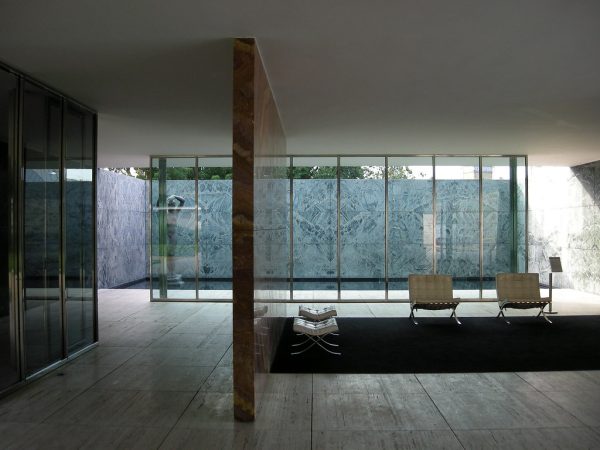
Ludwig Mies van der Rohe is one of the most prominent and influential architects of the 20th century. He is known as a pioneer of modern architecture, and his signature style is marked by simplicity, clarity, and elegance. Born on March 27, 1886, in Aachen, Germany, Mies began his career as an apprentice in his father's stone-carving workshop. At age 19, he moved to Berlin to work for Bruno Paul, a leading architect in the city at the time.
During the early years of his career, Mies worked in various design firms in Germany, gaining experience in both traditional and modern architectural styles. In 1912, he joined the office of renowned architect Peter Behrens, where he worked alongside other future giants of modernism such as Walter Gropius and Le Corbusier. It was during this period that Mies absorbed the ideas of the Arts and Crafts movement, which emphasized the importance of handmade craftsmanship and individual expression in design.
Mies' career took off in the 1920s, which was a time of great change in Europe, politically and culturally. The First World War had come to an end, and the Bauhaus school of design had just been established in Weimar, Germany. The new style of modernism was emerging, and Mies was determined to be a part of it. In 1929, he became the director of the Bauhaus, which had moved to Dessau by then. Under his leadership, the school became one of the most important institutions for modern design and architecture.
During his time at the Bauhaus, Mies developed his signature style, which was characterized by the use of simple, geometric forms, clean lines, and an emphasis on function over ornamentation. His designs were innovative, using new materials such as steel and glass to create light-filled, airy spaces. One of his most famous buildings is the Barcelona Pavilion, which was built for the International Exposition in 1929. The pavilion is a masterpiece of modernist architecture, with its simple rectangular form, marble columns, and glass walls that dissolve the lines between inside and outside.

As the political situation in Germany deteriorated in the 1930s, Mies emigrated to the United States, where he was offered a teaching position at the Armour Institute of Technology in Chicago (Now Illinois Institute of Technology). He quickly adapted to the American way of life and began designing buildings that would become icons of American modernism. One of his most famous works is the Farnsworth House, which he designed for Dr. Edith Farnsworth in 1951. The house, which is located in rural Illinois, is a masterpiece of modernist design, with its glass walls, steel frame, and minimal furnishings.
Mies' influence on modern architecture cannot be overstated. His work marked a turning point in the way buildings were designed and built. His principles of simplicity, clarity, and function over ornamentation continue to inform the work of architects today. His legacy can be seen in the work of architects such as Richard Meier, Philip Johnson, and Norman Foster, who have all been inspired by his philosophy and style.
Crown Hall is a building located on the campus of the Illinois Institute of Technology in Chicago, USA. It was designed by the German architect Ludwig Mies van der Rohe and completed in 1956.
Crown Hall is considered an icon of modern architecture and is widely regarded as Mies' masterpiece. It is a rectangular, steel-framed structure with a flat roof and an open-plan interior. The building is characterized by its minimalistic design, emphasizing clean lines, geometric shapes, and industrial materials such as steel and glass.
The interior of Crown Hall is completely open, with no interior walls (that go to the ceiling) or columns, allowing for maximum flexibility in use. The building's large, floor-to-ceiling windows provide ample natural light and create a strong connection between the interior and exterior spaces.
Crown Hall was designated a National Historic Landmark in 2001 and continues to be a popular destination for architects, students, and modern architecture enthusiasts.
Ludwig Mies van der Rohe was a trailblazing architect whose work continues to inspire and influence architects around the world. His vision of modernism, with its emphasis on simplicity, clarity, and function over ornamentation, changed the course of architecture in the 20th century. He left behind a legacy that continues to shape the way we think about and design buildings today.

Immerse yourself in architecture’s most boundary-pushing ideas—where innovative home improvements meet visionary urban developments. Discover new building techniques, materials, and creative concepts that are redefining how we shape our spaces on a global scale.